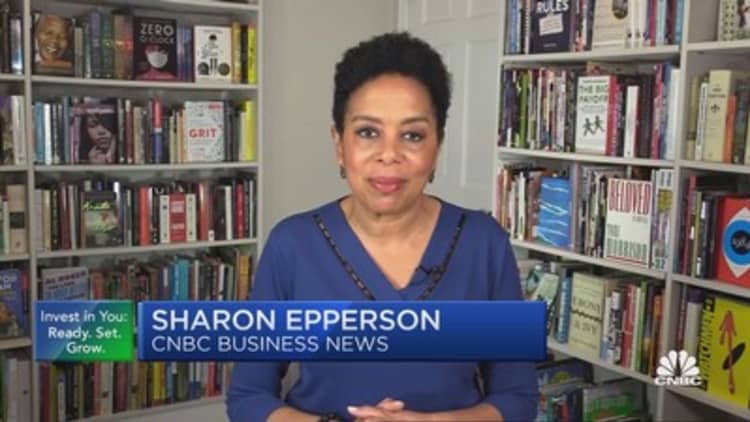Shapecharge | E+ | Getty Images
The federal estate-tax exemption helps wealthy families avoid or reduce inheritance tax, but the clock is ticking on the size of this advantage.
In 26 months, some families that pay no inheritance tax today face the potential for sizeable federal taxes unless benefactors act. Though few families have enough wealth to be affected, the percentage likely to pay inheritance tax as a result of the lower exemption may more than double.
The current exemption limit is $12.92 million for estates of individuals and $25.84 million for the combined estates of married couples. Congress set this limit, adjusted for inflation, in 2017, doubling the existing exemption.
More from Your Money:
Here’s a look at more stories on how to manage, grow and protect your money for the years ahead.
However, this legislation included a sunset provision calling for the exemption to revert to pre-2018 exemption amounts on Jan. 1, 2026. Unless Congress intervenes, the exemption will then halve — to less than $7 million for individuals and about $13 million for married couples.
This reduction would expose some estates to federal taxation for the first time in years and others, for the first time ever. About 0.1 to 0.2% of estates of people who died in recent years have been subject to federal tax. Under the scheduled lower exemption, this range could increase to 0.3 to 0.4%.
New families affected would include those with far less wealth.
For example, heirs of estates containing no more than a large home, a vacation home and a few million in liquid assets could owe inheritance tax that they wouldn’t face today. Non-exempt portions of estates are currently subject to a progressive tax that tops out at about 40% on values of $1 million or more.
Do this as soon as possible
Making changes to estate plans can be time-consuming, so it’s critical for benefactors to start considering changes as soon as possible. A common strategy is to trim your estate’s value before Dec. 31, 2025, and then keep it below the exemption limit, if feasible, or as low as possible to minimize tax exposure.
One way to accomplish this is to gift heirs cash or other items of value annually — investment securities, art collections, jewelry, etc.
There’s no tax on annual gifts valued at less than $17,000 per recipient from individuals and $34,000 from married couples. And there’s no limit on the number of recipients.

As this is an annual limit, benefactors can take advantage by making gifts in 2023, 2024 and 2025. This annual gift-tax exclusion limit isn’t changing, so you can continue making these gifts after 2025.
Though gifts above the limit may trigger no tax directly, this additional value would count toward what’s known as your lifetime estate and gift tax exemption — the sum of all non-excluded value that you’ve gifted over your entire life plus the value of your estate when you die.
This running personal total is the IRS’s way of limiting how much taxpayers can legally gift to shield their estates from taxation. As making gifts above the exclusion limit adds to your lifetime exemption total, doing so to reduce the size of your estate may be self-defeating.
Unless you have substantial room in your lifetime exemption, a best practice may be to keep gifts below the $17,000 exclusion limit.
Consider these other moves, too
There are various other ways to pass pieces of your estate along to heirs while you’re still alive, before the current exemption halves. Among them are:
- Creating and funding 529 college savings plans for young relatives like grandchildren, grand nephews and nieces. Funds withdrawn from these plans are tax-free when used to pay education expenses for grades K-12 and college. Current rules allow upfront funding with five years of the gift exclusion amount of $17,000 for individuals and $34,000 for married couples. For example, a married couple with 10 grandchildren could start a 529 plan for each grandchild and fund each account initially with up to $170,000. This would assure substantial resources for their grandkids’ educations while reducing the couple’s combined estate by up to $1.7 million. These gifts wouldn’t count toward the couple’s lifetime exemption because they’re within the exclusion limit.
- Creating and funding a spousal lifetime access trust (SLAT) to transfer substantial amounts out of your marital estate to your spouse, who would then have sole control of these assets. Such trusts are irrevocable, which means the terms of the trust, including the beneficiary, can’t be reversed in the event of divorce or separation. So undertaking a SLAT requires a confidence in a marriage. Some couples arrange a SLAT for each spouse, essentially sharing control of their joint assets after moving them out of their combined estate.
Andresr | E+ | Getty Images
- Creating a QPRT — qualified personal residence trust. These trusts involve giving away your home to an heir but continuing to live in it for the term of the trust. The value of the home comes out of the estate immediately. At the end of the trust’s term, the house becomes the property of the heir, usually an adult child, so entering into these trusts requires confidence in filial relationships. To get the intended advantage, you must outlive the term of the trust. If you don’t, the house comes back into your estate, defeating the purpose of the QPRT, so your age and health may be considerations.
- Transferring life insurance policies out your estate. Owning a policy in your name can automatically make it part of your estate, and a substantial policy can vastly increase your estate’s total value. The solution is to transfer ownership to an heir or, to reduce the heir’s tax liability, to an appropriate form of trust, with that heir as the trust’s beneficiary.
Are you close to the limit?
While getting organized to reduce your estate’s value by making gifts, it’s a good idea to get updated real estate appraisals. Significant increases in property values, common in many parts of the country over the last couple years, may bring your estate’s value closer to the scheduled exemption limit than you might think.
These appraisals would come in handy when selling property to raise cash for gifts, or for funding trusts and 529 plans.
Such moves can involve various complexities, so it’s a good idea to consult an estate planner, financial advisor or tax professional knowledgeable about federal tax rules and estate taxes in your state.
By planning carefully and working with expert advisors, you’ll be able to make informed choices about how to navigate the scheduled exemption reduction and assure that more of your wealth goes to your loved ones.
— By Trey Smith, CFP, registered representative, Truist Investment Services, and investment advisor representative, Truist Advisory Services
Correction: This article has been updated with the proper terminology for a trust to gift a residence.
[ad_2]
Source link













